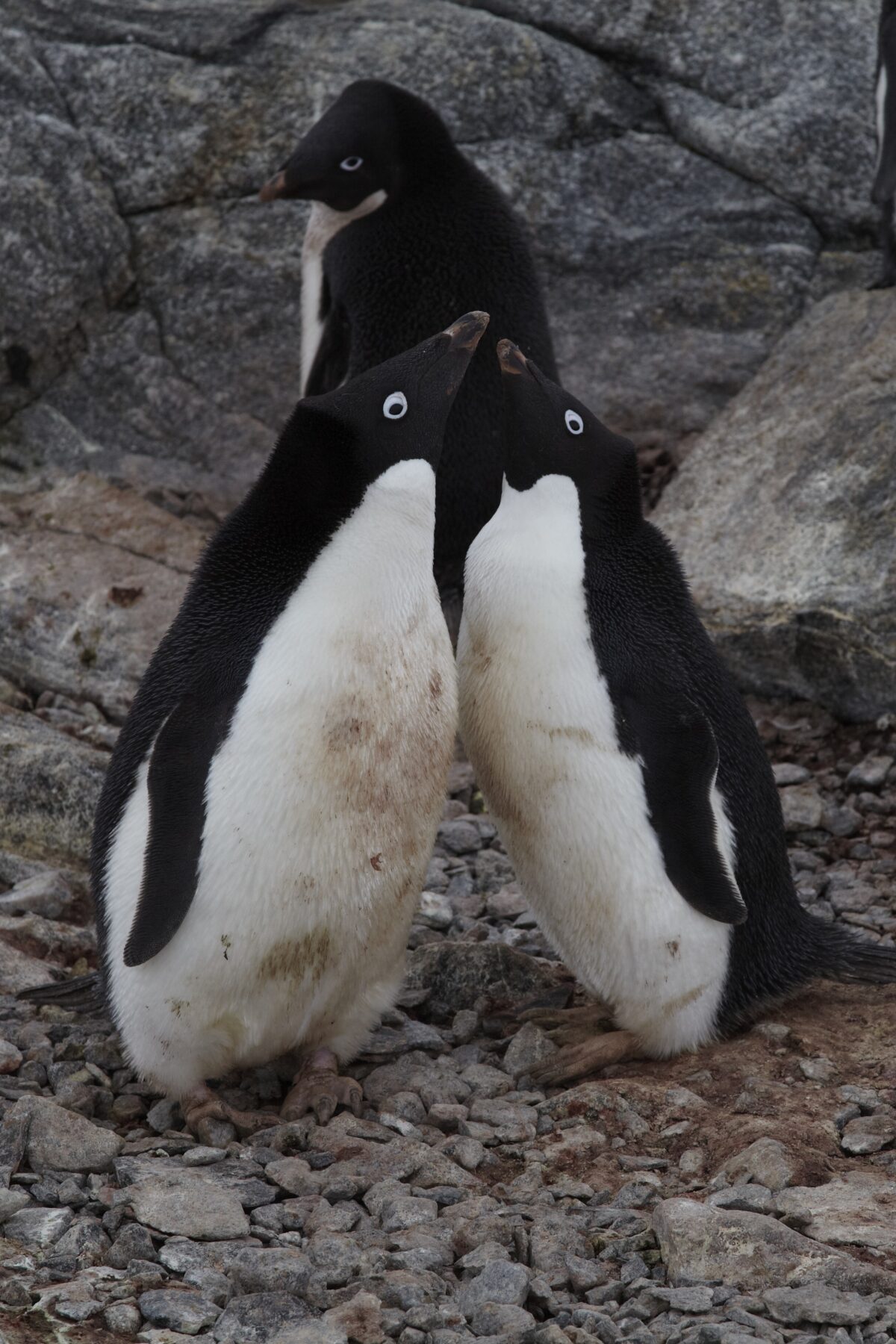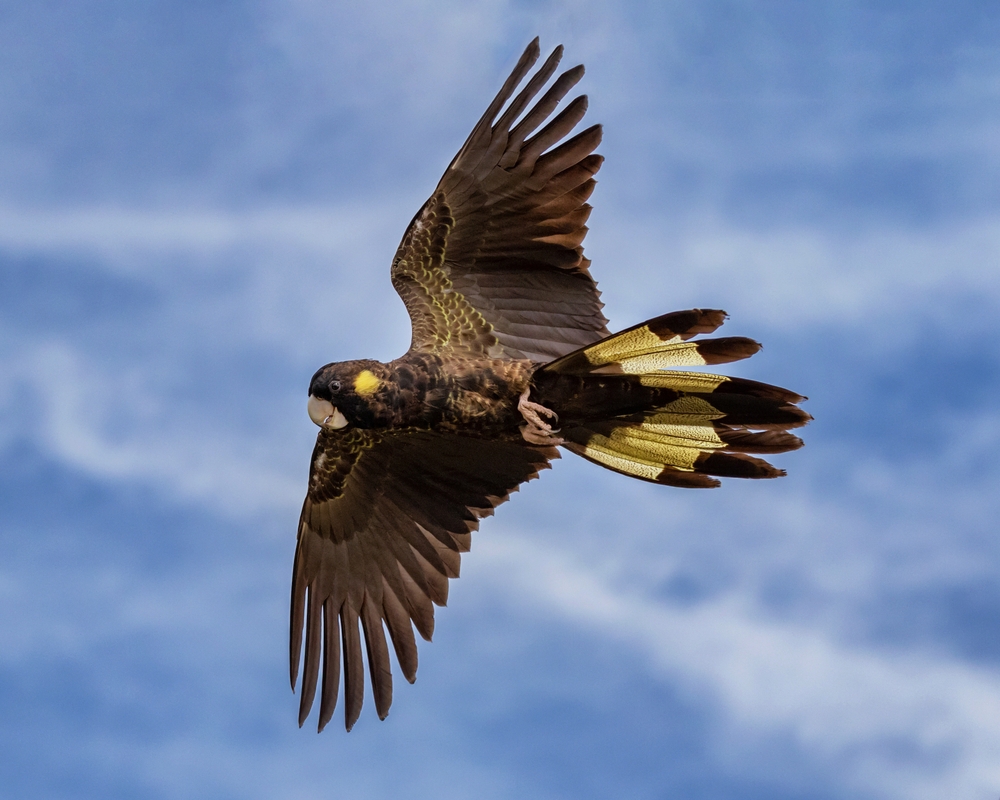| Common name | Adelie penguin |
| Scientific name | Pygoscelis adeliae |
| Type | Bird |
| Diet | Carnivore, eating fish, amphipods, and krill |
| Average lifespan | Between 10 and 20 years |
| Size | Up to 70cm tall, weighing 3-6kg |
Whether it’s waddling, jumping with two feet, tobogganing on their bellies, or torpedoing through the ocean, the Adelie penguin is a master of traversing the icing terrain that it calls home. The fascinating behaviour of a colony of Adelie penguins is enough to keep onlookers entertained for hours, and these social creatures spend much of their time on the Antarctic coast, close to the Australian research stations.
One of only five species of penguins that make their home on the Antarctic continent, the Adelie penguin is medium in size, with a mostly black body and face with a white belly and white rings around its brown eyes. Its bill is black with an orange base and is covered halfway with feathers.

Adelies are found exclusively within the Antarctic region and breed on the coast of Antarctica as well as on the rocky outcrops of its surrounding islands. The largest population of Adelie penguins can be found in the Ross Sea. During winter, the penguins make their home on the large coastal ice platforms, and travel to coastal beaches or rocky outcrops that are ice-free to nest during the spring and summer months.
With a changing diet depending on the time of year, Adelie penguins are carnivores that can dive to great depths of up to 175m in search of a meal. Mostly feeding within the upper 70m of the water column, when Adelies are close to the colony their diet consists of mostly fish, amphipods, and crystal krill (Euphausia crystallorophias). Breeding adults can swim between 5 and 120km offshore in search of food for their chicks and these hunting trips consist mainly of catches of Antarctic krill (Euphausia superba).
Born to swim, Adelies are sleek and streamline, often taking on the apperance of a torpedo as they maneuverer through the icy waters. Powerful and graceful in the ocean, the modified wings of the Adelie help to propel its body through the water. On land, Adelies are also determined and accomplished long distance walkers that travel across kilometres of ice to make their way to their colonies. Slowly does it, at just 2.5 km/h walking speed, compared to between 4 and 8 km/h within the water, the Adelie penguin takes advantage of snowy covered open terrain by flopping down on its tummy to toboggan.
During the breeding season in springtime, the Adelie penguin begins the journey back to its breeding grounds where it often reunites with the same partner for many consecutive years. Together, along with thousands of other Adelies, these penguin pairs begin to build nests and line them with small pebbles that they find on dry land on the rocky coastline of Antarctica.
Two eggs are laid within the nest and are incubated by both parents for around 36 days. Once the Adelie chicks have hatched, the male penguin continues to help the female to keep the young birds safe, alternating in the role of carer for around four weeks. It’s then, that the young chicks enter a type of penguin creche with other juvenile Adelies, offering protection in numbers whilst the penguin parents return to the open waters in search of food.
Highly social, Adelie penguins stick together in large colonies, where they eat and travel alongside other members of their group. Without a known social structure within the colonies, penguins use displays and posturing to communicate with each other, whilst mated penguins recognise the calls of their mate and their offspring.
Leopard seals, killer whales and south polar skuas are the most common predators of the Adelie penguin, with sheathbills also sometimes taking unguarded eggs. Adelie penguins were once hunted for oil, food and to be used as bait, but are now protected in most countries.















